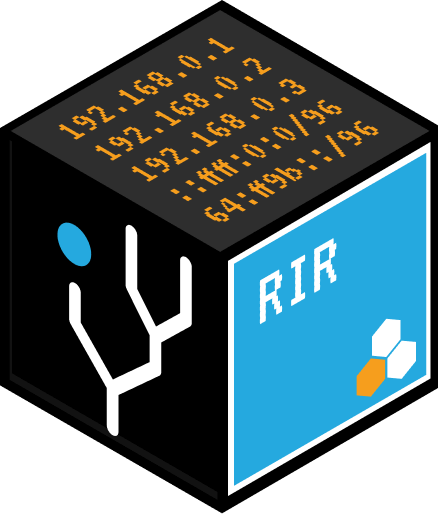Without question, 2011 was a significant year for IPv6, the essential next-generation Internet addressing protocol. The year’s notable IPv6 news included highly publicized announcements by Regional Internet Registries (RIR) on depleted IPv4 resources, and the start of IPv6 deployments by Comcast, the largest ISP in the U.S.
While IPv6 garnered considerable attention in 2011, many analysts and leaders in the network and telecommunications industries predict 2012 as the year for widespread adoption of this crucial communications protocol.
The Necessity of IPv6 Migration in 2012
More than a decade ago, the Internet Engineering Task Force (IETF) foresaw the eventual depletion of 32-bit IPv4 resources. In response, the organization developed IPv6, a new Internet Protocol with an expanded 128-bit addressing scheme. With its 340 undecillion address capacity, IPv6 is a marked improvement on its predecessor, which supports just 4.3 billion IP addresses.
IPv6 has a vast capacity for unique address assignment and allows devices to configure themselves automatically through a process known as Stateless Address Auto-configurationSLAAC. Devices connected to an IPv6 network can use SLAAC to configure their own IP addresses and related information without the support of a DHCP server; this enhancement provides more users and devices with faster always-on Internet access.
IPv6 has been in commercial deployment since 2006. Even with this availability and the growing demand for increased IP address capacity, IPv4 remains the world’s most widely used communication protocol. Cost, security, training and resources are some of the main concerns associated with the adoption of IPv6 and related IP Address Managementsolutions.
In a 2008 study by Google Inc., IPv6 penetration was reported in less than one percent of worldwide Internet-enabled hosts. Further indications of moderate IPv6 adoption were also revealed in the Global IPv6 Deployment Monitoring Survey 2011 by the Number Resource Organization. The international survey, published last October, found that “By July 2011, 27% of all ISPs were still to deploy IPv6.” Such low rates of adoption, however, are poised to become a thing of the past as more governments, ISPs and enterprises reach the capacity of their available IPv4 address pools.
Last February, the Number Resource Organization announced the full exhaustion of all free IPv4 address space. This news coincided with the distribution of two of the last blocks of IPv4 addresses to the Asia Pacific Network Information Centre (APNIC) by the Internet Assigned Numbers Authority (IANA). The assignment automatically triggered IANA to distribute the remaining IPv4 blocks to each of the world’s five RIRs.
The need for prompt protocol migration and next-generation IPAM adoption was also confirmed last April when APNIC announced the depletion of its first-generation IP address space. APNIC now has only a select group of IPv4 addresses on hand for designated network operators, making it the first of the IANA’s regional registries to deplete its pool of IPv4 addresses.
Other RIRs are also reaching the limits of their IPv4 resources.
The American Registry for Internet Numbers (ARIN) expects North America to reach its capacity within six to 18 months; the exact timeline for the region’s IPv4 exhaustion depends on the rate of addresses used by its 10 largest ISPs.
A report published last December by IANA projects IPv4 depletion for RIPE NCC, the registry responsible for Europe, the Middle East and parts of Central Asia, by July 2012. The report also estimates IPv4 exhaustion for LACNIC, the RIR for Latin America and parts of the Caribbean region, by January 2014, and AFRINIC, the RIR for Africa, by October 2014.
Along with the challenges of IPv4 address scarcity, ISPs, enterprises and government agencies worldwide are seeing high demand for IP resources resulting from the exponential growth of smart phones, tablet computers and other devices requiring continuous Evernetaccess.
Industry analysts predict the popularity and availability of IP-ready devices will continue through 2012 and beyond. A June 2011 report by the International Data Corporation (IDC) predicts global smartphone shipments to top 982 million by the end of 2015–nearly twice the amount shipped in 2011. Significant spikes in tablet sales are also expected in the coming years. The investment bank JP Morgan recently forecast 99.3 million tablet shipments worldwide in 2012, representing a 55.2% increase from 2011.
IPv6 Mandates and Initiatives
A number of international governments have issued IPv6 adoption mandates in response to the imminent depletion of IPv4 resources and the increased demand for IP addresses. Many of these orders include deadlines for full migration to the new communications protocol before or by the end of 2012.
In 2010, U.S. Federal CIO Vivek Kundra issued a directive requiring IPv6 compliance for the government’s entire inventory of public-facing Web sites and services by September 30, 2012. This marked the second IPv6 mandate issued by the President’s Office of Management and Budget (OMB); the first was a successful June 2008 deadline requiring next-generation IP connectivity over the backbone networks of all federal agencies.
Several Asia-Pacific countries are also executing far-reaching IPv6 deployment plans, including several initiatives launched years ago in anticipation of the region’s rapid depletion of IPv4 address space.
Here are some of the IPv6 adoption initiatives already in place in countries within the APNIC registry:
1. Australia: In 2008, the Australian Government Information Management Office (AGIMO) initiated a three-stage plan for the country’s migration from IPv4. The AGMIO established a December 31, 2012 deadline requiring every Commonwealth agency to have IPv6 compliance for all Internet gateways, applications and customer-facing systems. The AGMIO serves as Australia’s nominated agency for IPv6-related guidance and governance.
2. China: As the country with the largest population of Internet users, China launched its five-year plan for early IPv6 adoption in 2006. The program, known as the China Next Generation Internet (CNGI) project, has been instrumental in helping the country build the world’s largest IPv6 network. China showcased its CNGI project at the 2008 Olympic Games in Beijing. Its expansive next-generation network connects millions of devices, users, and security and transportation systems throughout the country.
3. Japan: Regarded as one of the first countries to adopt IPv6, Japan began deploying the next-generation Internet protocol in the late 1990s through its Widely Integrated Distributed Environment (WIDE) Project. In March 2000, Japanese telecommunications company NTT became the world’s first ISP to offer IPv6 services to the public. Millions of smartphones, tablets and other devices in homes, offices and public spaces throughout Japan rely on the country’s long-standing IPv6 network.
4. South Korea: In 2004, South Korea initiated widespread migration from IPv4 via IT839, making it one of Asia Pacific’s earliest adopters of the next-generation Internet protocol. The policy, established by the Ministry of Information and Communication, required the mandatory upgrade to IPv6 in the public sector by 2010.
In addition to the growing number of government-led efforts supporting IPv6 adoption, many organizations are developing initiatives to promote the successful, expedient migration to the modern communications protocol. Last June, Google, Facebook, Yahoo! and 1,000 other websites participated in World IPv6 Day, a coordinated 24-hour global trial of IPv6. The worldwide effort was sponsored by the Internet Society, a nonprofit group focused on Internet standards, education and policy.
Comcast Expands IPv6 Deployment in 2012
Last October, Comcast began deployment of IPv6 to 100 customers in the East Bay area of San Francisco. The development signaled a major shift in the adoption of IPv6 in the U.S., and established Comcast as the country’s first major ISP to provide commercial services on the next-generation Internet Protocol.
Although somewhat limited, the Bay Area roll-out was a key step toward Comcast’s goal of offering nationwide “production-quality IPv6 service in 2012.” The country’s largest ISP spent seven years planning for the widespread, commercial deployment of IPv6. As part of its migration efforts, Comcast is providing customers with dual-stack services that offer side-by-side support for both IPv4 and IPv6 resources.
Following the success of its trial deployment, Comcast began expanding its commercial IPv6 services to customers in Illinois, Florida, Pennsylvania and New Jersey. Support for the next-generation protocol is also offered on Comcast’s internal corporate network, which is used by 100,000 of its employees.
GoDaddy Spurs Increased IPv6 Support
Comcast’s deployment efforts are accompanied by another sign of widespread IPv6 adoption in 2012. A DNS survey published last November by The Measurement Factory found that more than 25% of .com, .net, and .org subdomains offered IPv6 support in 2011.
The survey also reported that zone support for the modern Internet Protocol rose a staggering 1,900 percent from 2010, due primarily to one source: GoDaddy.com. Last year, IPv6 addresses were added to the name servers used by the web hosting giant. With so many subdomains now offering support for the next-generation protocol, the demand for IPv6-ready networks and related IP Management solutions will continue to grow through 2012.
Related keywords: Network Automation, Network Management, Peering, Systems Administration







